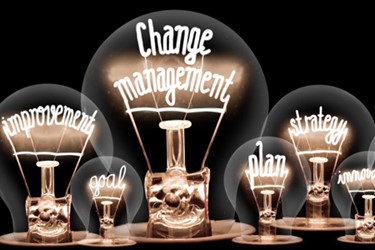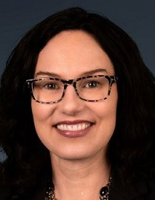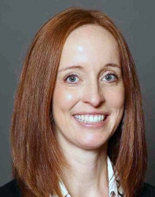The Keys To A Successful Training, Change Management, & Support Program

By Ed Miseta, Chief Editor, Clinical Leader

Implementing a new technology presents many challenges for companies. There is the implementation itself, the training of users, managing the change, and finally providing support to users. A panel discussion at the 2019 Oracle Health Sciences Connect conference tackled these challenges, providing advice on how to manage all facets of a new technology implementation. Participants on the panel included Lorena Gomez, director of global study start-up and essential documents at Allergan, Jennifer Weaver, associate director and clinical operations lead at CSL Behring, and Leila Cukic, business and configuration lead for PPD.
When asked how to best conduct training, all agreed on the use of live demos as part of that exercise. Still, they agreed the best way for users to become familiar with a new technology is to get their hands on it and actually use it. In fact, the use of live demos, without other training to support it, is a training technique that Gomez discourages. Oftentimes, the timing of live demos is not convenient or advantageous for users.
“I think one problem with live demos is that they can be conducted well in advance of the actual implementation,” says Gomez. “If these sessions are conducted too far in advance, the information will no longer be fresh in the minds of the users when they need it.”
Role-Based Or All-Inclusive Training?

“We do offer computer-based training,” says Weaver. “These are recorded sessions that generally run about 10 to 12 minutes. It’s a way for staff to get the training done at a time that is convenient for them. In addition to that we have ongoing meetings with certain users. Generally, they are an hour and take place weekly to every other week. The meetings will feature representatives of the vendor company who are available to answer questions from users. It’s a great way for users to learn and have someone there to walk them through their questions.”

“I can run reports on certain fields to see if there are issues that come to light,” she says. “If we see fields that are not filled in or where data has been entered incorrectly, we would know that is an area deserving of additional training. If other fields are consistently completed correctly, we would know that is an area where we would not need to spend additional time or effort.”
Of course, products can change, either from a new release from the vendor or company changes to configurations of the product. When that happens, Weaver notes additional training may be required to ensure employees are up to date on the changes.
Properly Manage Change

“Like almost everyone, I too hate change,” says Weaver. “So, when change does occur, I can empathize with the users who will be impacted by it. One of the steps we like to take is getting them involved from the very beginning. We surveyed our clinical team members to determine what features they really wanted in a study start-up solution. They shared what they were most interested in, which helped us to evaluate the available systems and determine which one was the right fit for CSL. As we were making the selection decision, we also brought in key players from different departments to share their thoughts. These were not managers. They were users whose input we wanted to hear.”
Following this path allowed CSL to have change agents within the company advocating for the new solution. It was a true bottom-up approach that allowed everyone’s voice to be heard and eliminated any possibility that employees might feel a new technology was being forced upon them. When the company finally made the selection decision, CSL knew it was the system that was right for everyone.
Once CSL decided on the product and made the purchase, the next step was to get everyone on board and excited about the implementation. The effort began with a mass email to all departments notifying them of the selection decision. Weaver then partnered with goBalto to showcase the product within the various departments. That effort involved travelling globally to where those departments were located, attending meetings, and personally presenting the product to users. The presentations involved discussing why a study start-up solution was needed and why that particular solution was selected. That was followed by a demonstration of the product and its features, which allowed users to become familiar with it.
Communication Is Important
After a new technology is implemented, it is important to communicate with internal departments as well as sites. This will allow you to know if the technology is working as planned and if personnel are happy with the new tools they are using. Surveys are one method that can be used to gauge that level of adoption and support. Cukic notes PPD will use both internal and site surveys to gather feedback. The internal surveys are conducted approximately every six months. One individual, known as the change champion, will monitor feedback and address concerns.
Cukic advises against assuming concerns in one country will be similar to those in other locations. What works in France may not work as well in the U.S. Every location is different and personnel in varied locations will have different questions and concerns. Be sure to handle those concerns individually and not collectively.
Have A Rollout Strategy
Once the decision is made, the product is purchased, and questions and concerns have been addressed, it is time to roll out the new product. You can’t just walk in one day, flip a switch, and expect everything to be operating as advertised. Having a rollout strategy in place will ensure a positive experience is had by everyone involved.
Gomez notes that Allergan likes to rollout new products using a conservative approach. When implementing their study start-up solution, they started the project in the U.S and with minimal functionality. The implementation grew from there.
“After the U.S. we configured seven or eight countries in Europe,” states Gomez. “We configured another 15 or so after that on a rolling basis. Once the configuration work was complete, studies were brought in. We started with the Phase 1 studies and worked through all the Phase 3 studies. Everything was done in a step-by-step manner.”
The only regret Gomez had with this approach was that it resulted in a situation where a bigger study was live on the new system in some countries but not in others. That created some reporting problems as it is difficult to collate information coming from multiple systems. “I would advise against this approach for that reason,” she says. “Teams were frustrated and that made it difficult for them to see the value of the new technology. I believe you need to put the entire study into the new solution or don’t do it at all.”
Gomez notes her company also underestimated how much IT support would be needed. In retrospect, she thinks there could have been a dedicated IT source for the product launch. She also believes it would have been helpful to attain more buy-in from users throughout the company. “We could have done a better job showcasing the tools to all the functional areas who would touch it,” she says. “The cost of having the tool at sites is billed back to the study team. The study team then wonders why they’re paying for the system for their sites. We should have laid the groundwork that would help them see the value in that.”
Communicating Upgrades
The final step in any implementation is communicating news of changes and upgrades to users. That is normally done via email, and unfortunately those emails often end up in the trash folders of users. That means some attention needs to be paid to making sure important news reaches them.
“We still use a lot of email notifications and I agree that they are not always read,” says Weaver. “We use SharePoint, which is a knowledge center that features a page with the most up-to-date information on all of our systems. Additionally, we have one email address that users can reach out to with questions on any of our clinical systems. Those emails do not go to our IT department. They go to our clinical IT group. Someone there can quickly filter those questions and make sure they get to me or someone else that can answer the question.”
“We also have an email that users can reach out to so as to get their questions answered,” adds Gomez. “That email will send out tips and tricks that our users find useful. Our knowledge center is a mind map where all documents are stored, and live updates are made to guidance documents and tracking conventions.”
